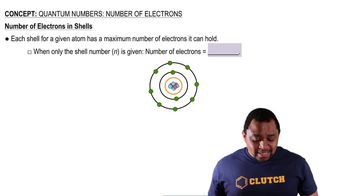Here are the essential concepts you must grasp in order to answer the question correctly.
Representative Elements
Representative elements are found in groups 1, 2, and 13-18 of the periodic table. They are characterized by their ability to form a wide variety of compounds and exhibit predictable properties based on their group. Understanding the group number of these elements is essential for predicting their behavior in chemical reactions, including their oxidation states in ionic compounds.
Recommended video:
Periodic Table: Representative Elements & Transition Metals
Ionic Compounds
Ionic compounds are formed when atoms transfer electrons, resulting in the formation of positively charged cations and negatively charged anions. The overall charge of the compound is neutral, and the arrangement of these ions in a lattice structure contributes to the compound's stability and properties. Identifying the ions in a compound like X₂SO₃ is crucial for determining the group number of the representative element X.
Recommended video:
Group Number and Valence Electrons
The group number in the periodic table indicates the number of valence electrons in the outer shell of an element. This is significant because the valence electrons determine how an element interacts with others, including its ability to form ionic bonds. For representative elements, knowing the group number helps in predicting the charge of the ions they form in compounds, such as in X₂SO₃.
Recommended video:
Electronic Structure: Number of Electrons Concept 1
 Verified step by step guidance
Verified step by step guidance Verified video answer for a similar problem:
Verified video answer for a similar problem:



 2:33m
2:33m